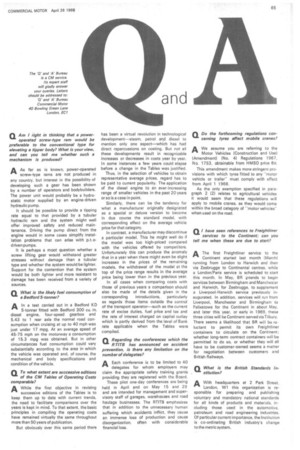Q To what extent are successive editions of the CM Tables of Operating Costs comparable?
Page 67

If you've noticed an error in this article please click here to report it so we can fix it.
AWhile the first objective in revising
successive editions of the Tables is to keep them up to date with current trends, the need to facilitate comparisons over the years is kept in mind. To that extent, the basic principles in compiling the operating costs have remained virtually the same throughout more than 50 years of publication.
But obviously over this same period there has been a virtual revolution in technological development—steam, petrol and diesel to mention only one aspect—which has had direct repercussions on costing. But not all these developments result in recognizable increases or decreases in costs year by year. In some instances a few years could elapse before a change in the Tables was justified.
Thus, in the selection of vehicles to obtain representative average prices, regard has to be paid to current popularity. The application of the diesel engine to an ever-increasing range of smaller vehicles in the past 20 years or so is a case in point.
Similarly, there can be the tendency for what a manufacturer originally designated as a special or deluxe version to become in due course the standard model, with corresponding effect on the average vehicle price for that category.
In contrast, a manufacturer may discontinue a particular model. This he might well do if the model was too high-priced compared with the vehicles offered by competitors. Unfortunately this can produce the anomaly that in a year when there might even be slight increases in the prices of the remaining models, the withdrawal of the model at the top of the price range results in the average price being lower than in the previous year.
In all cases when comparing costs with those of previous years a comparison should also be made of the details given in the corresponding introductions, particularly as regards those items outside the control of the transport operator—such as the current rate of excise duties, fuel price and tax and the rate of interest charged on capital outlay which is partly derived from the level of Bank rate applicable when the Tables were compiled.




















































































































